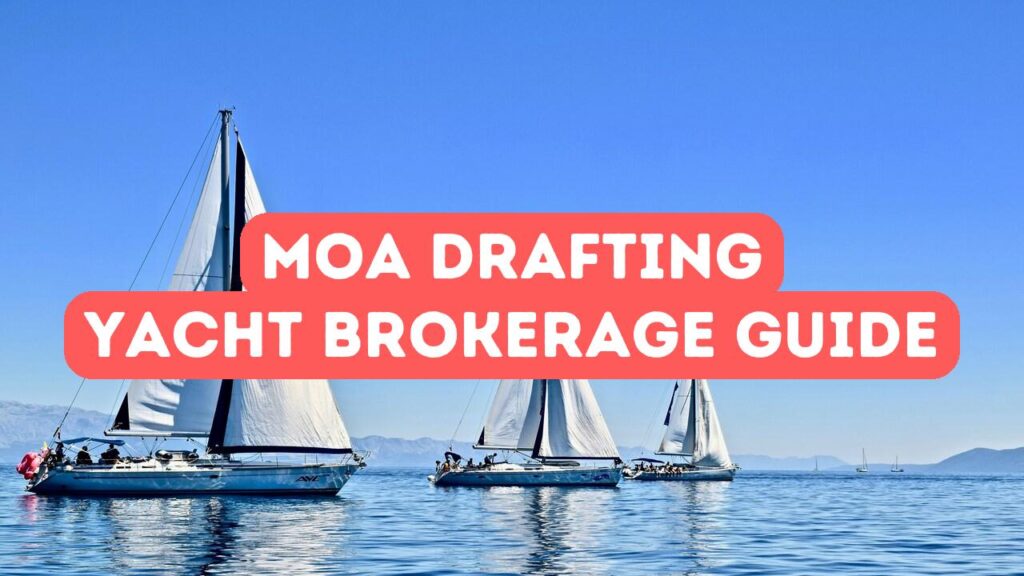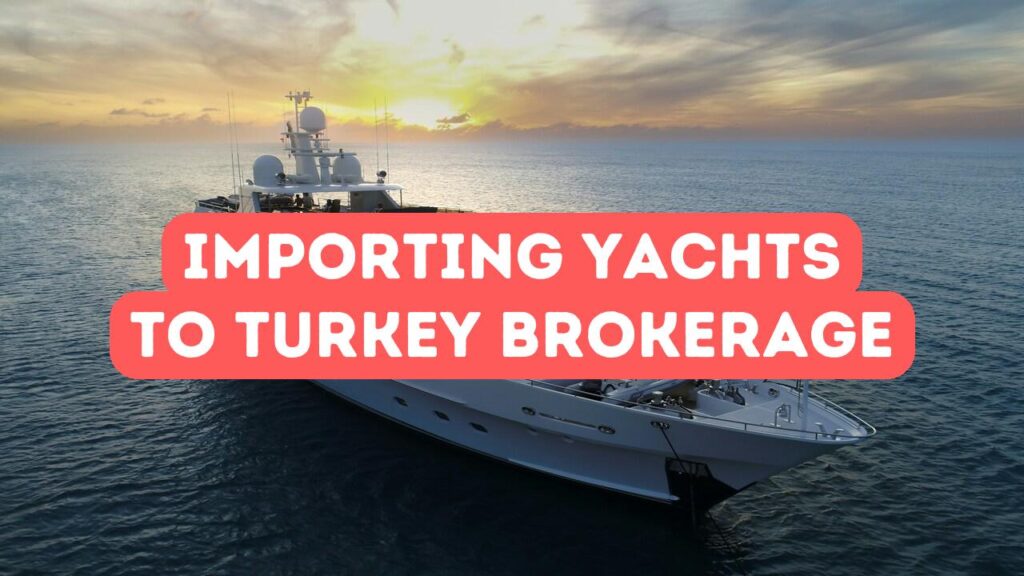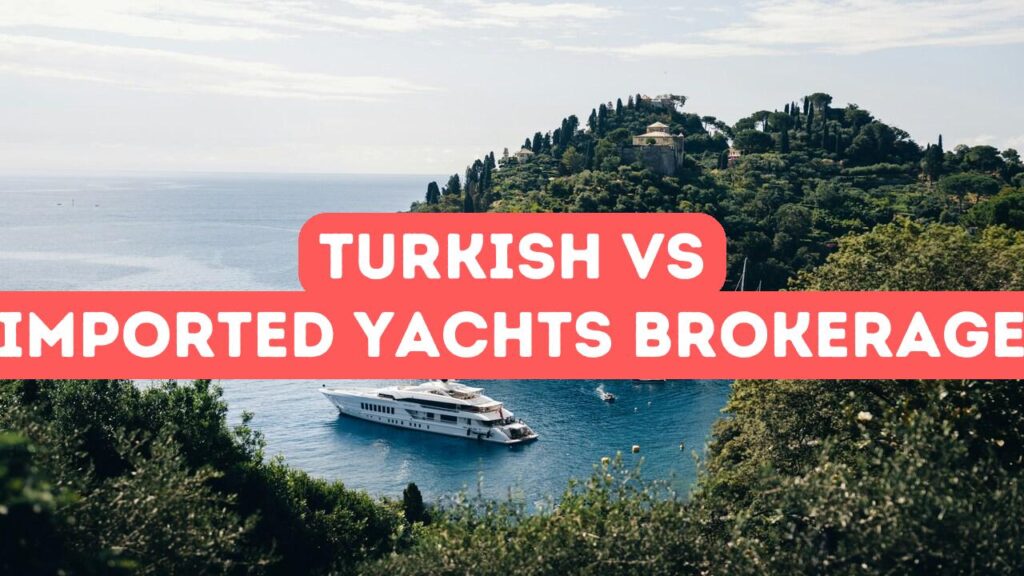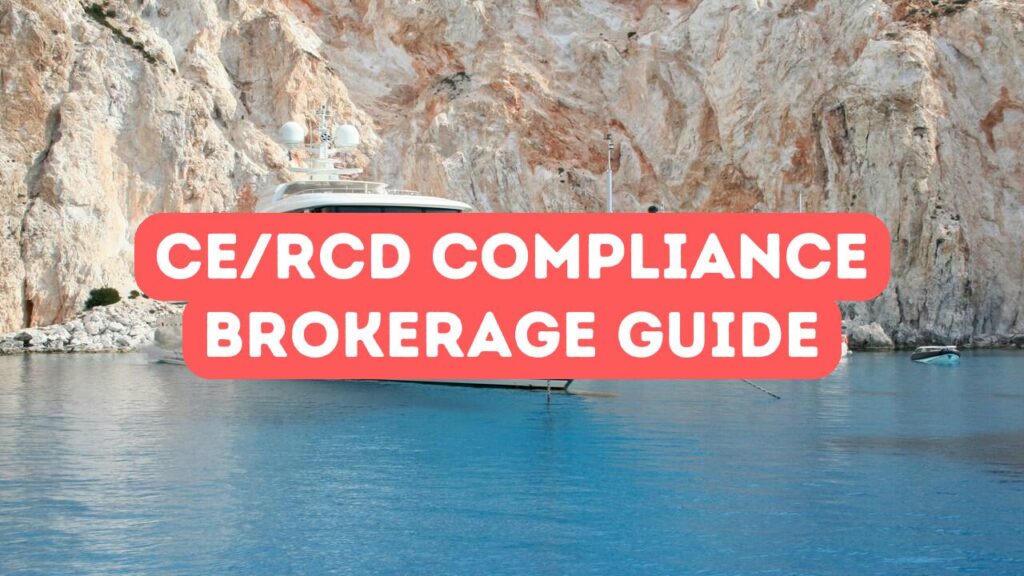Navigating the world of yacht brokerage can seem like steering through uncharted waters. When it comes to MOA drafting and purchase agreements, it’s crucial to have a solid compass guiding your decisions. Think of a yacht purchase guide as your treasure map, leading you to a smooth transaction. Missteps here can cost not just time, but a slice of your hard-earned fortune. That’s why understanding brokerage legal tips is indispensable. Properly crafted purchase agreements serve as your anchor, providing stability amidst negotiation waves. They ensure both buyer and seller set their sights on a shared horizon. So, whether you’re a seasoned sailor or a novice ambling your way into yacht dealings, arming yourself with knowledge about MOA drafting can help chart a successful course. Your journey in yacht brokerage demands attention to these details, ultimately ensuring the vessel of your dreams doesn’t slip through your fingers.
Understanding the Essentials of a Memorandum of Agreement in Yacht Brokerage
In the sphere of yacht brokerage, the Memorandum of Agreement (MOA) stands as your captain’s log. It meticulously records the essential elements of your yacht purchase. But why is understanding MOA drafting so important? It’s simple—this document captures every promise and condition in the purchase agreements. Think of it as your yacht purchase guide, mapping out commitments, timelines, and financial details. Each point secured in the MOA serves as a key piece of your strategy, ensuring a seamless passage. Dive deeper into this world, and you’ll find that MOAs hold the power to turn potential legal squalls into plain sailing. Brokerage legal tips emphasize the importance of this document as it aligns the interests of both parties. It’s your first line of defense, safeguarding your investment and setting the stage for an agreeable transfer of the helm.
Crafting the perfect MOA in yacht brokerage is akin to mastering the knot that ties buyer and seller securely. This pivotal document is your yacht purchase guide’s backbone, an intricate blueprint detailing the nautical journey ahead. At its core, MOA drafting ensures every handshake holds weight, transforming spoken agreements into binding commitments. Brokerage legal tips remind us that clarity is king; each clause in the purchase agreements should unfurl like a well-laid sail, precise and purpose-driven. Whether it’s the delivery date, payment terms, or contingency plans, a robust MOA leaves no room for doubt. The stakes are high—just like a sudden swell can rock a boat, a poorly constructed MOA can unsettle the entire transaction. Thus, diligence here isn’t just advisable; it’s indispensable, providing the assurance needed to navigate these waters confidently, ensuring both parties journey toward mutual satisfaction.
Understanding the essentials of an MOA in yacht brokerage can make all the difference. Think of it as assembling a life raft before setting sail. Brokerage legal tips highlight that it’s not just about filling in blanks— every word holds value. Your yacht purchase guide should underline how MOA drafting marries documentation and decision-making. Detail must flow like a steady current, covering responsibilities and expectations clearly. Purchase agreements benefiting both parties require clarity; elements like the yacht’s specifics, agreed price, inspection timelines, and closing processes must all be crystal clear. By methodically crafting these sections, you secure the transaction’s foundation, much like ensuring the ropes are taut before launch. The power of a well-framed agreement is its ability to transform complex dealings into smooth waters, ensuring everyone is on the same page, ready for the journey ahead.
Key Components of Purchase Agreements for Yacht Transactions
In yacht brokerage, creating effective purchase agreements is like fitting a key into the right lock; it opens the door to a seamless transaction. Key components of these agreements underpin the stability of any yacht deal and include essential aspects like the description of the yacht, terms of sale, and obligations of both parties. An accurate description acts as the vessel’s fingerprint, leaving little room for confusion. Terms of sale, on the other hand, set the course for a fair and clear exchange. Remember, the details are where the strength of your agreements lies—a carefully drafted MOA can shield you from unforeseen squalls. Brokerage legal tips emphasize this; they help lay a solid keel for your yacht purchase guide. Don’t overlook these pillars; they’re vital to ensuring every party sails away satisfied, guarding both your investment and peace of mind.
Sure, let’s break it down: the title as your guiding star and the subtotal as your navigational beacon. Your yacht purchase guide isn’t just about signing on the dotted line; it’s weaving through intricate currents. The clauses regarding inspection and sea trials are what anchor faith in the deal. Here, the heart of MOA drafting releases its pulse, demanding clarity and precision. Remember, these agreements aren’t just paper; they’re the sails catching negotiation winds. Brokerage legal tips can avert a rogue tide, ensuring terms are met before closing the deal. The specifics of repairs and maintenance capture the essence of a yacht’s seaworthiness, acting as the compass needle pointing true north. Painting broad strokes won’t suffice. In yacht brokerage, meticulous attention to purchase agreements is the keel keeping your journey steady. This isn’t simply paperwork; it’s the foundation upon which your nautical dreams are built.
When diving into the essentials of purchase agreements in yacht brokerage, warranty clauses emerge as a lighthouse in turbulent legal seas. These are your promises set in stone, designed to buffer unexpected storms. They outline liability in terms of defects and performance fluctuations, making sure both buyer and seller hold a compass of confidence. Including specifics about financing is central in your yacht purchase guide, ensuring a clear route through potential fiscal fog. Yacht financing often requires precise navigation to prevent crashes in understanding. Then, there’s the provision of title transfer, a crucial milestone ensuring the key truly fits the lock of ownership. It’s a dance of words and intentions that, when aligned, can turn the entire process from a daunting odyssey to a well-choreographed passage. Pairing these with brokerage legal tips isn’t just wise; it’s like having an experienced captain guiding your course, mitigating risks at every twist and turn.
Best Practices for Negotiating a Successful Yacht Purchase Agreement
In the yacht brokerage scene, securing a robust purchase agreement is akin to setting your sails just right for a favorable wind. MOA drafting isn’t merely a formality; it’s the keystone that holds together every hope and dream tied to your yacht purchase guide. To streamline the process, here are some brokerage legal tips—stand firm on essential terms and maintain clarity in all communications. Remember, hasty decisions might leave you adrift. Prepare to negotiate with a cool head and a keen eye. Put yourself in the buyer’s seat—how would your offer sound to them? A balanced approach ensures both parties are content, avoiding any ripples post-agreement. Whether you’re a novice or a seasoned mariner, understanding the ebb and flow of negotiations can lead you to calmer seas and a satisfying conclusion.
When embarking on the voyage of negotiating a yacht purchase agreement, preparation is key. Think of MOA drafting as your navigational chart—it plots each point from start to finish. Don’t jump the gun; instead, gather all the intel you can about the vessel, seller, and market trends. This is where your yacht purchase guide becomes invaluable. A well-informed buyer is a powerhouse, calmly steering through negotiations with a clear understanding of both the dream and the details. Relying on solid brokerage legal tips can transform turbulent talks into a smooth sail. Keep communication lines open, and remember that patience is your compass—it will guide you to a fair agreement. The aim is mutual satisfaction, and striking that balance will help drop anchor in a harbor of contentment for both parties. With these best practices, navigating the intricate waters of yacht brokerage becomes a rewarding voyage.
Certainly, securing a successful yacht purchase agreement is like mastering the art of the deal—every move counts. Let’s lay the groundwork with astute preparation. First, familiarize yourself with the yacht’s history, condition, and fair market value—knowledge is your strongest ally. An adept understanding can serve as your compass in this negotiation voyage. Simultaneously, study the seller’s perspective; it’s essential for crafting a compelling proposal that aligns with your yacht purchase guide. Throughout these talks, anchor your strategy in transparency and goodwill, reflecting your commitment to constructive negotiations. Lean into brokerage legal tips to side-step legal whirlpools and chart a navigated route past common obstacles. Embrace these guiding principles, and what once seemed complex becomes your field of expertise, ultimately anchoring your dream in reality while saving you from stormy seas.
Disclaimer: This article is for general informational purposes only and you are strongly advised to consult a professional to evaluate your personal situation. No liability is accepted that may arise from the use of the information in this article.






